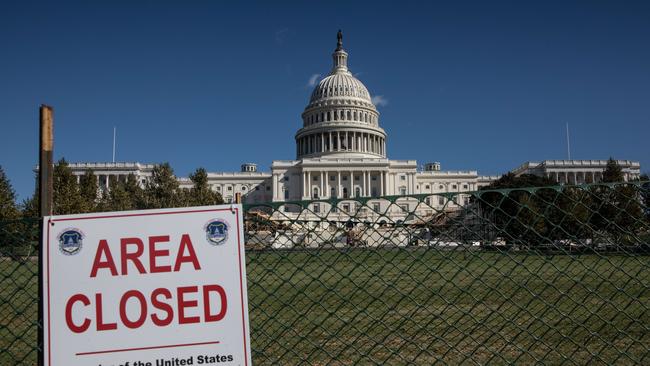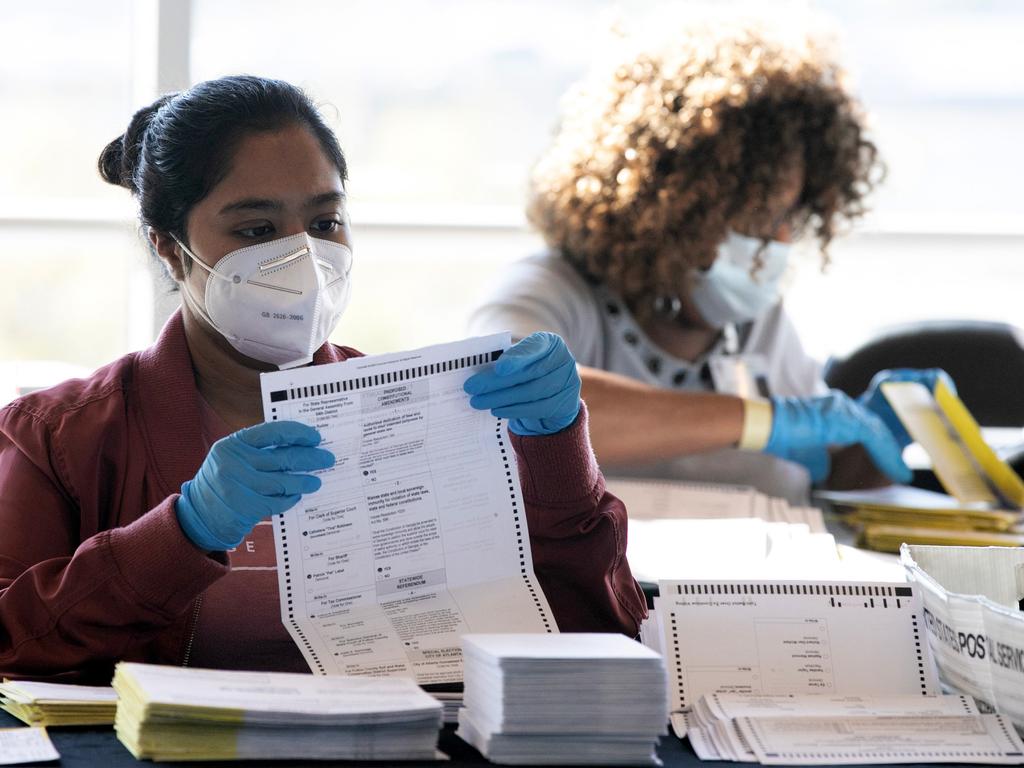Uncertain recovery signals difficult days for US president
Anyone tuning into quarterly update calls with Wall Street investors could not help but pick up the tentative tone and frequent dour notes of executives.

On the hustings, both Donald Trump and Joe Biden promised to revive America’s economy from its pandemic-induced funk. Doing so will require a turnaround for corporate America, which has suffered a savage downturn. When the occupant of the White House starts his term in January, in what state will American business be?
Some recent vital signs may look promising. America’s economy expanded at a record pace of 33 per cent, on an annualised basis, in the third quarter. Total profits for the big firms of the S&P 500 index have surpassed expectations by roughly a fifth, with 85 per cent beating forecasts for the quarter.
Michael Wilson of Morgan Stanley calculates that revenues for the median S&P 500 firm rose by 1 per cent year on year. Small wonder that the Conference Board, a research organisation, published a survey on October 20 finding that its measure of confidence of bosses at big companies has jumped to 64, from 45 in the previous quarter — a figure above 50 indicates more positive than negative responses.
Yet anyone tuning into quarterly update calls with Wall Street investors could not help but pick up the tentative tone and frequent dour notes of executives. Visa, for example, called the recovery “uneven”. Caterpillar admitted it was “holding more inventory than we normally would” because of the uncertainties resulting from the pandemic. And a close analysis of the figures suggests that the corporate recovery is very patchy, with some industries and smaller firms still in big trouble. Meanwhile, balance sheets are under strain, which could hold back investment and lead to an eventual rise in defaults.
America’s economic boom in the latest quarter would be impressive had it not come on the heels of a comparable decline in GDP in the previous quarter. The economy remains 3.5 per cent smaller than it was at the end of 2019, reckons the Conference Board, and it is not likely to return to its pre-pandemic level until the tail end of 2021 or later.
As for the large proportion of companies where profits exceeded expectations this quarter, Tobias Levkovich of Citi is unimpressed: “Beating lowered earnings expectations is not that great a feat.”
It is now clear that analysts were too pessimistic when they pencilled in their forecasts earlier in the year. He adds that many firms managed to improve profits not by boosting sales but by slashing expenses. “You can’t cost-cut your way to prosperity,” he says.
The more you peer into the numbers, the more inconsistent the recovery looks.
One source of differentiation is where a company’s customers are based. Jonathan Golub of Credit Suisse estimates companies in the S&P 500 reported an aggregate revenue decline of 2.8 per cent and a fall of 10.2 per cent in profits in the third quarter. But he estimates that at US firms focused on exports, profits plunged by more than 14 per cent, whereas those companies more reliant on the domestic market suffered a drop of less than 9 per cent.
Size is another lens that reveals the uneven recovery. Binky Chadha of Deutsche Bank argues that it is “a tale of two stockmarkets”. The market capitalisation of the five biggest tech giants (Facebook, Amazon, Apple, Microsoft and Alphabet) has fallen in recent weeks from its peak of roughly a quarter of the entire value of the S&P 500 index. Even so, they have generated returns of 39 per cent for shareholders this year and without them the 495 others have produced a return of -1 per cent.
Small and medium-sized firms (SMEs) have been crushed. The proportion of them that are making losses — based on the Russell 2000 — has declined a bit from its peak of above 40 per cent, but it remains well above 30 per cent. SMES are nearly four times as likely to be losing money as big firms, a far worse situation than during the recession of 2001 or the global financial crisis a decade ago.
The mood is foul. The latest survey of executives at SMEs found sentiment “stalled in October 2020 due to increased concerns about an economic slowdown amid a resurgence in COVID-19 infections”. The gloomy outlook, the most pessimistic in six years, may be explained by the fact that 42 per cent of small firms believe they will run out of cash in under six months.
If the inconsistency of the recovery is one worry, the other is the state of firms’ balance sheets. Corporate debt was rising before the pandemic, and many firms have piled on more borrowing in order to cover the shortfall in revenue they have experienced this year. Edward Altman of NYU Stern School of Business is worried about what he calls “the enormous build-up of non-financial corporate debt”. By his estimation, firms have issued more than $US360bn ($495m) in high-yield debt (junk bonds) so far this year, surpassing the previous record of $US345bn in all of 2012. With debt-earnings ratios reaching critical levels, and a resurgence in corporate defaults, Altman reckons that 6.5-7 per cent of junk bonds, by dollar value, will default in 2020.
His fears are echoed by S&P Global, which calculates that the “distress ratio” (junk bonds with spreads of more than 10 percentage points relative to US Treasuries) for US companies had come down to 9.5 per cent in September from its peak of 36 per cent in March, but that it remains above pre-pandemic levels. Corporate America already leads the world in the tally of corporate defaults this year, with 127 by the end of October. Nicole Serino of S&P Global notes that corporate credit quality is deteriorating, with the number of firms rated CCC+ or below now 50 per cent higher than at the end of 2019. For such firms, she worries that “excess liquidity and low interest rates are only postponing the inevitable”.
With a large share of firms still making losses and given the weakening of balance sheets it is far from clear that American business is in the clear. What happens next depends on three unknowns.
One is the fallout from the presidential vote. A prolonged period of post-election uncertainty would weigh on the mood. Levkovich points to the 11 per cent fall in the S&P 500 after the election in 2000 while legal wrangling decided the outcome of the contest for the presidency between George W. Bush and Al Gore.
Another unknown is the timing and size of the next package of fiscal stimulus from congress, which is frozen by partisan gridlock in Washington, and which could be limited if the Republicans keep control of the Senate. This matters to companies because, as Golub puts it, “the government has effectively said, ‘We do not want market forces to drive firms out of business right now and so we are going to backstop a large part of the economy’.” Wilson believes that the number of companies going bankrupt so far this year has been much lower than otherwise feared because of generous stimulus measures.
The biggest unknown is the pandemic. Moody’s predicts corporate debt defaults will continue to rise until March next year. The reason it gives is “economic recovery remains fragile amid risks of another pandemic resurgence leading to another round of countrywide lockdowns”. That should serve as a sober reminder to the next president and corporate bosses alike that, despite a rebound, there may yet be difficult days ahead for USA Inc.







To join the conversation, please log in. Don't have an account? Register
Join the conversation, you are commenting as Logout